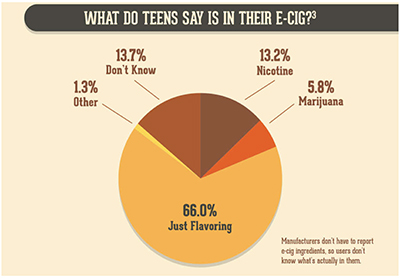FAQ’s regarding Tobacco/Nicotine Use
What is the toll of tobacco in North Dakota?
Get the facts: https://www.tobaccofreekids.org/problem/toll-us/north_dakota
What are the use rates at NDSCS? Click here.
- E-cigarettes are known by many different names – “e-cigs,” “vapes,” “juuling”, “vaporizers,” “pipes,” “mods,” “tanks,” “vape pens,” and “electronic nicotine delivery systems.”
- Some even look like regular cigarettes or pipes. Some resemble pens, USB sticks, and other items.
- E-cigarettes produce an aerosol by heating a liquid that usually contains nicotine, which is the addictive drug in regular cigarettes and other tobacco products. These products also contain flavorings and other chemicals that help make the aerosol. Users inhale his aerosol into their lungs. Bystanders can also breathe in this aerosol when the user exhales into the air.
Use of tobacco, nicotine or vaping devices is strictly prohibited at NDSCS. Not only are they bad for your health and for those around you, they set of NDSCS fire alarms. If you are caught using, you could face a variety of consequences from a $250.00 fine to suspension.
No. Most, if not all, of these products contain nicotine. We know that nicotine use – especially in youth – can affect brain development. We also know that it isn’t a “water vapor” that is being inhaled into the lungs, it is aerosol plus heavy metals like lead, volatile organic compounds, and cancer-causing agents.
We don’t have long-term studies on the health effects of vaping, but we know that these products aren’t as harmless and people think.

According to the CDC, 66% of youth e-cig users believe that it contains “just flavoring”. It is difficult to know what is in an e-cig…for example, some e-cigarettes marketed as containing zero percent nicotine have been found to contain nicotine.
The jury is still out. The FDA does not currently approve e-cigarettes as a quit smoking aid. A recent CDC study found that many adults are using e-cigs as a cessation aid, but most do not stop smoking traditional cigarettes and are instead continuing to use both products (known as “dual usage”).
- May affect teens’ behavior, concentration, memory and their ability to learn
- Increases risk of low impulse control
- Chronic nicotine exposure may lead to insulin resistance & type 2 diabetes
- Inhaled nicotine increases heart rate and blood pressure
- Nicotine is highly addictive
o Nicotine acts as a gateway drug and primes the brain so things like cocaine and heroin are more rewarding - Exacerbate asthma & other lung conditions
- Releases unsafe levels of lead, chromium, manganese, and/or nickel into the lungs & environment
- Increased risk of lung, bladder cancer
- Increased risk of heart disease
- Persistent cough, bronchitis, congestion/phlegm
- Mental Health: strong relationship between youth smoking and depression, anxiety and stress